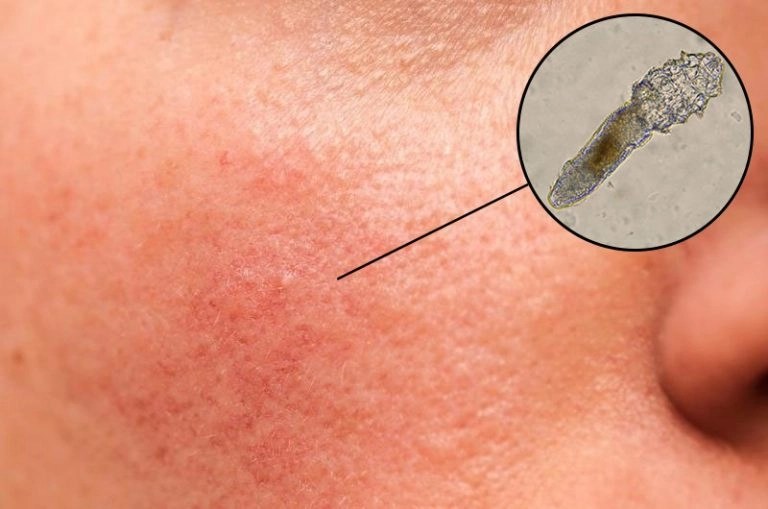Understanding The Signs Demodex Mites Are Dying
Demodex mites are tiny parasites that inhabit the skin of many mammals, including humans. While they are usually harmless, an overpopulation can lead to skin issues such as inflammation, acne, and rosacea. Recognizing the signs demodex mites are dying is essential for anyone dealing with skin conditions linked to these pests. By identifying these signs, individuals can better manage their skin health and potentially reduce the discomfort associated with demodex infestations.
Many people may be unaware that they have demodex mites living on their skin. These microscopic creatures can thrive in hair follicles and sebaceous glands, often going unnoticed until symptoms arise. If you suspect that you have a demodex mite issue, understanding the signs that they are dying can provide both relief and guidance on the next steps in your skincare routine. This article delves into the various indicators of dying demodex mites and offers practical advice for managing their presence.
As you explore the signs demodex mites are dying, it’s essential to understand how these mites interact with your skin and the conditions that favor their survival. By learning about their lifecycle and the factors that contribute to their decline, you can take informed actions to promote a healthier skin environment. In this article, we will cover the key signs of dying demodex mites, the treatments available, and how to maintain optimal skin health moving forward.
What are Demodex Mites?
Demodex mites are microscopic parasites that belong to the family Demodicidae. There are two main species that commonly inhabit human skin: Demodex folliculorum and Demodex brevis. They primarily reside in hair follicles and sebaceous glands, feeding on skin cells and oils. Most people have a small number of these mites living on their skin without any adverse effects. However, when their population increases, it can lead to various skin problems.
How do Demodex Mites Affect the Skin?
The presence of demodex mites can cause skin irritation and inflammation. Symptoms may include:
- Redness and swelling
- Itching and burning sensations
- Acne-like breakouts
- Flaky or dry skin
When these symptoms occur, it's essential to investigate the possibility of a demodex mite overgrowth and look for signs demodex mites are dying.
What Are the Signs Demodex Mites Are Dying?
Recognizing the signs demodex mites are dying can help you determine whether your treatment is effective. Here are some common indicators:
- Decrease in Skin Irritation: As the mites die off, you may notice a reduction in redness, itching, and swelling.
- Improvement in Skin Texture: The skin may start to feel smoother and look healthier.
- Less Frequent Breakouts: A decline in acne-like symptoms can indicate a decrease in mite population.
- Reduction in Oiliness: Since demodex mites thrive on excess oil, a decrease in oiliness could suggest their numbers are dwindling.
Can You See Signs of Demodex Mites Dying?
While demodex mites are not visible to the naked eye, you may observe changes in your skin that indicate their decline. Look for improvements in skin condition, such as:
- Clearer complexion
- Fewer clogged pores
- Less redness and inflammation
These changes can signal that your treatment is working and that the signs demodex mites are dying are becoming evident.
What Treatments Help in Reducing Demodex Mites?
Several treatments can effectively reduce demodex mite populations. Here are some popular options:
- Topical Medications: Prescription creams containing ivermectin or metronidazole can help eliminate mites.
- Tea Tree Oil: Known for its antimicrobial properties, tea tree oil can be an effective natural remedy when diluted and applied to the skin.
- Proper Skincare Routine: Maintaining a consistent skincare routine, including cleansing and exfoliating, can help control mite populations.
How Long Does it Take to See Results?
Results may vary depending on the treatment used and the severity of the infestation. Some individuals may notice improvements within a few days, while others may require weeks of consistent treatment. Regular monitoring of your skin’s condition is crucial to understanding the effectiveness of your chosen method.
Are There Preventive Measures to Avoid Demodex Overgrowth?
To prevent demodex mite overgrowth, consider the following tips:
- Maintain Good Hygiene: Regularly cleanse your face, especially if you have oily skin.
- Limit Heavy Makeup Use: Avoid heavy or oil-based makeup products that can contribute to clogged pores.
- Use Non-Comedogenic Products: Choose skincare and makeup items that won’t block pores.
When Should You Consult a Dermatologist?
If you suspect a demodex mite infestation and over-the-counter treatments are not effective, it’s essential to consult a dermatologist. They can provide a proper diagnosis and recommend appropriate treatments tailored to your skin’s needs.
Conclusion: Understanding the Signs of Demodex Mites Dying
Recognizing the signs demodex mites are dying is crucial for anyone dealing with related skin issues. By monitoring skin condition improvements and understanding effective treatment options, individuals can manage their skin health more effectively. If symptoms persist, seeking professional advice is always recommended to ensure optimal care and recovery.



ncG1vNJzZmivp6x7s7HBnqOrmZ6YtbjFzmeaqKVfnru0tcahq6xpY2TAqrPNrGSdnZ2ksabEjKagrZ2jYq6zsYydsKKml2O1tbnL